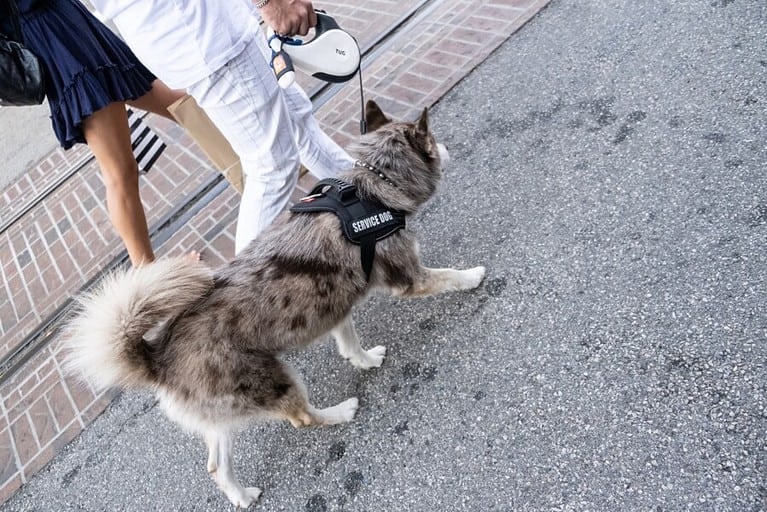Animal Care
Husky Exercise Demystified: Discovering the Right Amount of Physical Activity

Husky Exercise demystified of the Siberian Husky. Lobbying the question, “How much exercise does a Husky need?”, this inquiry isn’t as straightforward as one might think. The answer hinges on numerous variables that consider not just the physical, but the mental aspects of this high-energy, intelligent breed.
Bred for endurance in the harsh Siberian climate, these working dogs are known for their athleticism, strength, and tenacity. However, their exercise needs are not just to burn off physical energy, but also to fulfil their instinctual drives and mental stimulation, especially considering their origins as sledder dogs.
Husky exercise requirements
of canine exercise requirements, Huskies find themselves in a league of their own. Renowned for their stamina, they give weight to the phrase “a tired dog is a happy dog.”
A Summary of Husky Exercise Needs
Commonly known for their prominent roles in sled pulling, Huskies were bred for endurance. This historical use is a key factor that instills in them an innate need for rigorous physical activity. Over time, this necessity has manifested into a seemingly insatiable energy drive that distinguishes Huskies from many other dog breeds.
The Role of Age and Health
It is of significant importance to remember that the exercise needs of a Husky fluctuate depending on the dog’s age and health. What might be adequate for a spry, young Husky might not necessarily meet the needs of an older or ailing one.
An essential question to ponder is: how much exercise does a typical Husky crave? The answer to this intriguing enigma is not as straightforward as it might seem.
Minimum Exercise Recommendations
Taking into account the general characteristics of a Husky, professionals in the canine world recommend, at the very least, 2 hours of exercise in a day – a number significantly higher than that for an average dog. The exercise could span various activities, ranging from brisk walks, runs, to games of fetch in a large, secure area.
| Age | Minimum Daily Exercise Requirement |
|---|---|
| Young (up to 18 months) | Up to 5 hours |
| Adult (1.5-6 years) | At least 2 hours |
| Senior (Over 6 years) | 1 to 2 hours (adjusted to health) |
These figures represent mere bottom-line recommendations. Every Husky is an individual, with its own unique energy level and personality. Therefore, owners should be mindful of their pet’s cues and tailor their routines accordingly.
The Risk of Under-Exercise
Failure to meet a Husky’s substantial exercise needs can lead to numerous problems, such as obesity and a host of behavioral issues like excessive barking, digging, or even attempts to escape. When a Husky does not receive adequate exercise, that pent-up energy has to be released somehow, often leading to such detrimental actions.
Under-exercised Huskies can soon become a nightmare, paving the way for an adventurous investigative tale. Thus, providing enough exercise to your furry friend is not just a favor, it’s a necessity.
Why exercise is important for Huskies
pulling sleds across the icy tundra of their native Siberian landscape. Huskies are popular pets, not just for their striking appearance but also for their energetic and playful disposition. In this context, understanding the exercise needs of these iconic dogs is not only beneficial but critical to meeting their fundamental needs.
Huskies are essentially high-energy dogs. Bred originally to cover large distances, these dogs harbor a strong urge to run, pull, and remain active. They have an impressive capacity for sustained, strenuous physical activity and an inherent desire to release this tremendous energy.
So, just how much exercise do Huskies need? Can there be too much or too little of it? Let’s delve deeper to unveil the truth behind this enigma.
A Summary of Husky Exercise Needs
The basic rule of thumb for a healthy, adult Husky is approximately 2 hours of physical exercise each day. However, this number isn’t arbitrary or fixed; it’s a baseline that can, and should, be adjusted based on the individual dog’s needs and capabilities. The type of exercises can vary, but should involve a mix of walking, running, play, and structured training sessions.
The Role of Age and Health
It’s important to understand that the ideal exercise regimen for a Husky varies with their age and health. Puppies and young Huskies, for instance, may require less intense but more frequent bouts of activity to burn off their supercharged energy while protecting their still-developing joints. Older, senior Huskies typically require less strenuous activity, focusing more on consistent exercise to maintain mobility and flexibility.
Similarly, health status plays a paramount role in designing the exercise routine. Dogs with specific health conditions may need adjustments to accommodate their limitations, guided by the best available professional veterinary advice. Herein, understanding individual conditions and tailoring the fitness regimen accordingly is key.
Minimum Exercise Recommendations
At a bare minimum, a typical healthy adult Husky should get an hour’s worth of daily physical activity. This should ideally be divided into two sessions of half an hour each – one in the morning and one in the evening. This does not include additional mental stimulation through play and training, which Huskies also significantly benefit from.
The Risk of Under-Exercise
What happens if Huskies don’t get enough exercise? The answer paints a grim picture. Under-exercised Huskies can develop a range of physical and mental health issues, including obesity, cardiovascular ailments, excessive chewing, digging, and other forms of destructive behavior. The risk of anxiety and depression also looms large, highlighting the urgency in meeting these dogs’ exercise needs.
In essence, exercise plays a crucial role in Husky health, and understanding the specifics of its requirement can go a long way in ensuring a happy and healthy life for these remarkable dogs.















